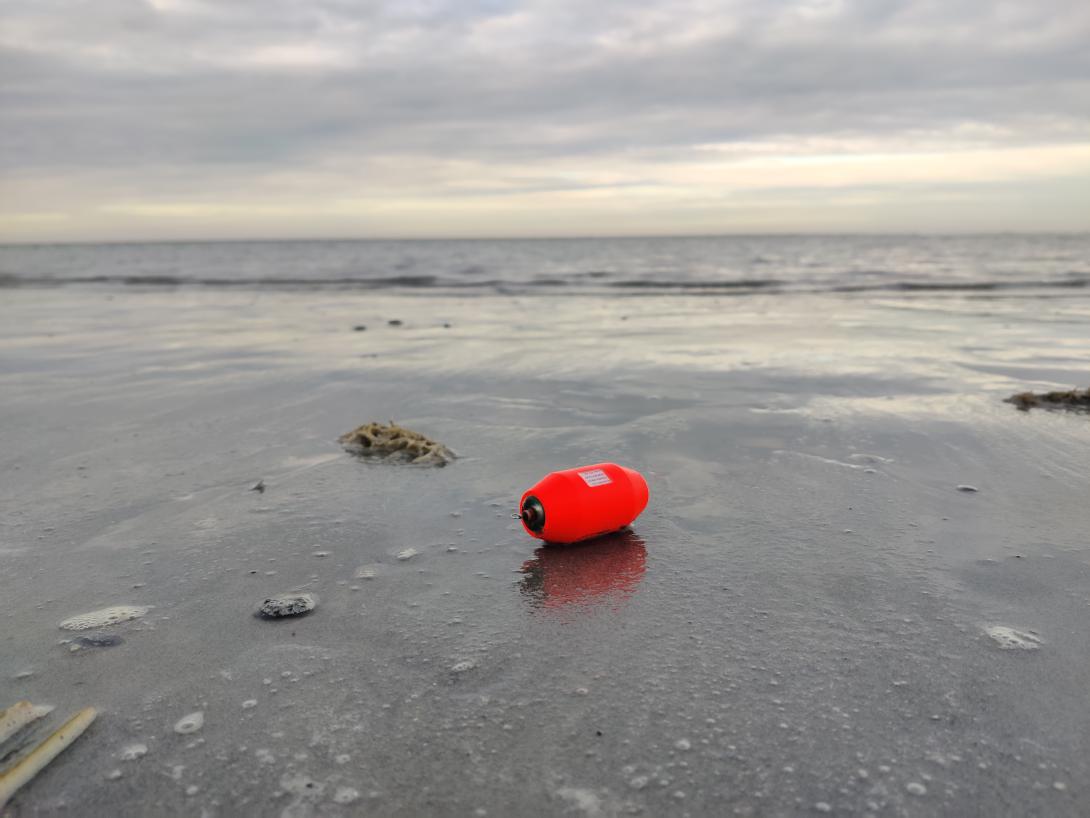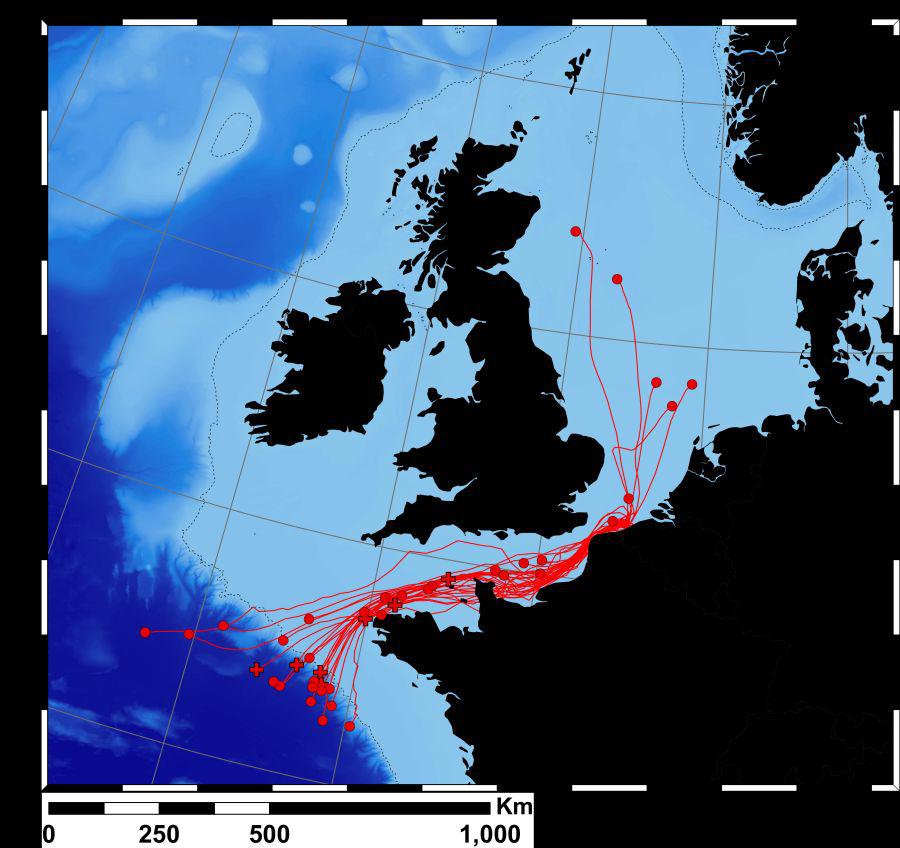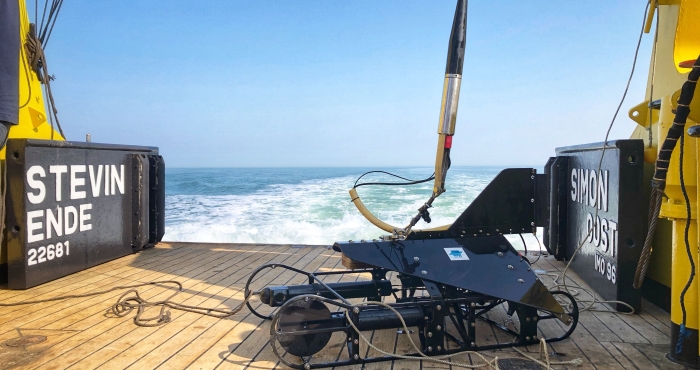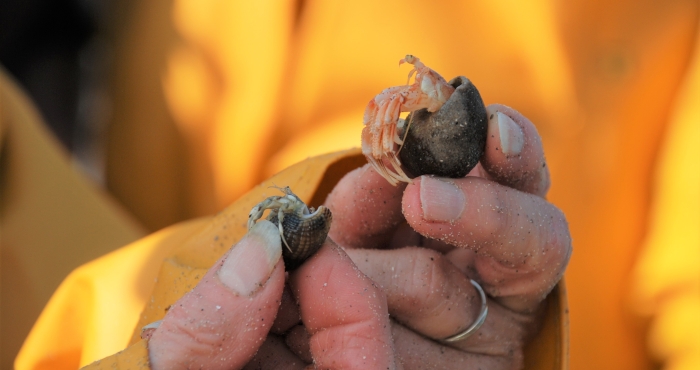Publications
Van Wichelen, J., Verhelst, P., Perneel, M., Van Driessche, C., Buysse, D., Belpaire, C., Coeck, J. & De Troch, M. (2022). Glass eel (Anguilla anguilla L. 1758) feeding behaviour during upstream migration in an artificial waterway. Journal of Fish Biology.
Goossens, J., Buyse, J., Bruneel, S., Verhelst, P., Goethals, P., Torreele, E., Moens, T. & Reubens, J. (2022). Taking the time for range testing: an approach to account for temporal resolution in acoustic telemetry detection range assessments. Animal Biotelemetry 10: 1-13.
Verhelst, P., Aarestrup, K., Hellström, G., Jepsen, N., Koed, A., Reubens, J., Sjöberg, N., Svendsen, J.C. & Kristensen, M. L. (2022). The effect of externally attached archival data loggers on the short-term dispersal behaviour and migration speed of European eel (Anguilla anguilla L.). Animal Biotelemetry 10: 1-8.
Verhelst, P., Reubens, J., Coeck, J., Moens, T., Simon, J., Van Wichelen, J., Westerberg, H., Wysujack, K. & Righton, D. (2022). Mapping silver eel migration routes in the North Sea. Scientific reports 12: 1-10.
Verhelst, P., Reubens, J., Buysse, D., Goethals, P., Van Wichelen, J., Moens, T. (2021). Towards a roadmap for diadromous fish conservation: the Big Five considerations. Frontiers in Ecology and the Environment, online published.
Van Wichelen, J., Verhelst, P., Buysse, D., Belpaire, C., Vlietinck, K., Coeck, J. (2020). Glass eel (Anguilla anguilla L.) behaviour after artificial intake by adjusted tidal barrage management. Estuarine, Coastal and Shelf Science, 107127.
Steendam, C., Verhelst, P., Van Wassenbergh, S., De Meyer, J. (2020). Burrowing behaviour of the European eel (Anguilla anguilla): Effects of life stage. Journal of Fish Biology 97: 1332-1342.
De Meyer, J., Verhelst, P., Adriaens, D. (2020). Saving the European eel: How morphological research can help in effective conservation management. Integrative and Comparative Biology (accepted)
Bruneel, S., Verhelst, P., Reubens, J., Luca, S., Coeck, J., Moens, T., Goethals, P. (2020). Combining disciplines: Dealing with observed and cryptic animal residencies in passive telemetry data by applying econometric decision-making models. Ecological Modelling 438: 109340.
Bruneel, S., Verhelst, P., Reubens, J., Baetens, J., Coeck, J., Moens, T., Goethals, P. (2020). Quantifying and reducing epistemic uncertainty of passive acoustic telemetry data from longitudinal aquatic systems. Ecological Informatics 59: 101133.
Reubens, J., Verhelst, P., van der Knaap, I., Wydooghe, B., Milotic, T., Deneudt, K., Hernandez, F., Pauwels, I. (2019). The need for aquatic tracking networks: the Permanent Belgian Acoustic Receiver Network. Animal Biotelemetry 7, 1 – 6.
Reubens, J., Verhelst, P., van der Knaap, I., Deneudt, K., Moens, T., Hernandez, F. (2019). Environmental factors influence the detection probability in acoustic telemetry in a marine environment: results from a new setup. Hydrobiologia 845, 81 – 94.
Verhelst, P., Reubens, J., Aelterman, B., Van Hoey, S., Goethals, P., Moens, T., Coeck, J., Mouton, A. (2018). Movement behaviour of large female yellow European eel (Anguilla anguilla L.) in a freshwater polder area. Ecology of Freshwater Fish 27: 471-480
Verhelst, P.; De Meyer, J.; Reubens, J.; Coeck, J.; Goethals, P.; Moens, T.; Mouton, A.M. (2018). Unimodal head-width distribution of the European eel (Anguilla anguilla L.) from the Zeeschelde does not support disruptive selection. PeerJ 6: e5773.
Verhelst, P.; Bruneel, S.; Reubens, J.; Coeck, J.; Goethals, P.; Oldoni, D.; Moens, T.; Mouton, A. (2018). Selective tidal stream transport in silver European eel (Anguilla anguilla L.) – Migration behaviour in a dynamic estuary. Est., Coast. and Shelf Sci. 213: 260-268.
Verhelst P.; Baeyens R.; Reubens J.; Benitez J.; Coeck J.; Goethals P.; Ovidio M.; Vergeynst J.; Moens T.; Mouton A.. (2018). European silver eel (Anguilla anguilla L.) migration behaviour in a highly regulated shipping canal. Fish. Res. 206: 176 - 184.
Verhelst, P.; Reubens, J.; Pauwels, I.; Buysse, D.; Aelterman, B.; Van Hoey, S.; Goethals, P.; Moens, T.; Coeck, J.; Mouton, A. (2018). Movement behaviour of large female yellow European eel (Anguilla anguilla L.) in a freshwater polder area. Ecol. Freshw. Fish. 27(1): 471-480.
Verhelst, P.; Buysse, D.; Reubens, J.; Pauwels, I.; Aelterman, B.; Van Hoey, S.; Goethals, P.; Moens, T. (2018). Downstream migration of European eel (Anguilla anguilla L.) in an anthropogenically regulated freshwater system: Implications for management. Fish. Res. 199: 252-262.
Verhelst, P.; Boets, P.; Van Thuyne, G.; Verreycken, H.; Goethals, P.L.M.; Mouton, A. (2016). The distribution of an invasive fish species is highly affected by the presence of native fish species: evidence based on species distribution modelling. Biological Invasions 18(2): 427-444.
Reubens, J.; Verhelst, P.; van der Knaap, I; Deneudt, K.; Moens, T.; Hernandez, F. (2018). Environmental factors influence the detection probability in acoustic telemetry in a marine environment: results from a new setup. Hydrobiologia Online: 1–14.
Bruneel, S.; Gobeyn, S.; Verhelst, P.; Reubens, J.; Moens, T.; Goethals, P. (2018). Implications of movement for species distribution models - rethinking environmental data tools. Sci. Total Environ. 628-629: 893-905.
Breine, J.; Pauwels, I.; Verhelst, P.; Vandamme, L.; Baeyens, R.; Reubens, J.; Coeck, J. (2017). Successful external acoustic tagging of twaite shad Alosa fallax (Lacépède 1803). Fish. Res. 191: 36-40.
Huisman, J.; Verhelst, P.; Deneudt, K.; Goethals, P.L.M.; Moens, T.; Nagelkerke, L.A.J.; Nolting, C.; Reubens, J.; Schollema, P.P.; Winter, H.V.; Mouton, A. (2016). Heading south or north: novel insights on European silver eel Anguilla anguilla migration in the North Sea. Mar. Ecol. Prog. Ser. 554: 257-262.
De Smet, B., D'Hondt, A.-S., Verhelst, P., Fournier, J., Godet, L., Desroy, N., Rabaut, M., Vincx, M., Vanaverbeke, J. (2015). Biogenic reefs affect multiple components of intertidal soft-bottom benthic assemblages: the Lanice conchilega case study. Estuarine, Coastal and Shelf Science 152: 44–55.
Award
As the laureate of the 2016 VLIZ Communication Award, Pieterjan could benefit from a personal communication coaching by the VLIZ Communication division. This collaboration resulted in an educational video on eel migrations and acoustic telemetry.
News and Outreach
- Continuous, Eos Wetenschap: Eos blogs by Pieterjan Verhelst
- 2022-01-12, Het Nieuwsblad: Vlaamse onderzoekers lossen eeuwenoud ‘palingmysterie’ op: “We stonden versteld”
- 2022-01-11, Vlaamse wetenschappers brengen tot nog toe onbekende migratieroutes van ernstig bedreigde palingen in kaart
- 2020, Radio 1: Red de paling
- 2022, Radio 2: Dolfijnen genieten van seks, weet Joeri Cortens
- 2020-03-17, Cefas Technology Limited Blog: The Mystery of European Eel migration
- 2020-03-10, BBC news, Tracking European eels in the English Channel
- 2020 March to May, Exhibition at de Blankaart: Paling in ‘t rood
- 2020-01-26, Zeeuitzicht: De mysterieuze zeereis van de paling
- 2019-12-28, De Standaard: Onze paling is een zorgenkind
- 2019-12-19, Eos Wetenschap: Zenderonderzoek moet paling van ondergang redden
- 2019-09-19, Eos Wetenschap: Paling in 't rood
- 2018-11-11, Gazet van Antwerpen: Paaiproces van de paling is nog altijd door niemand waargenomen: hoe doen ze het toch?
- 2018-11-09, De Standaard: Strandjutters kunnen 50 euro verdienen met palingzender
- 2018-11-09, Radio2: De parende paling
- 2018-05-26, Radio1: Hoe zit het met de Belgische vis en hoe wordt dat eigenlijk gemeten?
- 2017-03-20, Visionair: Shortcuts voor Paling
- 2016-12-15, LifeWatch.be news: Aristoteles en soortenverspreiding en migratiepatronen
- 2016-10-31, Vroege Vogel TV: Moeflons op de Veluwe en palingen zenderen
Contact
Useful links
Fish acoustic receiver network: Learn about the fish telemetry network of the Belgian LifeWatch Observatory.
ETN: Access, store and share fish tracking data on the European Tracking Network data platform.
Data explorer: Access and explore the acoustic fish detection data with the LifeWatch data explorer.





